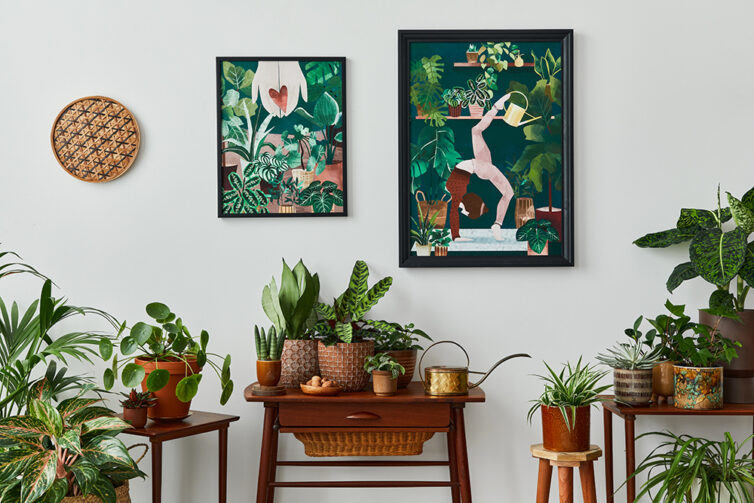Keeping your plant healthy starts at the roots. The root zone is responsible for taking in vital nutrients and water, so it’s very important that you pay attention to its wellbeing.
It’s easy for keen growers to focus their attention on all of the wonderful things happening above the soil, but while leaves and foliage are certainly important too, starting with the roots will make all the difference to the health of your plants.
Avoid over or under watering
Your plant’s roots need just the right amount of water – too little or too much is likely to result in wilting and drooping, and could potentially kill the plant.
With too much water, you risk drowning the plant and depriving the roots of oxygen. Hydroponic growers are typically able to avoid this – although you do need to be careful not to add too much water when you first introduce your plant to the hydroponic system. If you think that your plant has been overwatered, reduce your watering schedule to allow time for the excess to drain away or be absorbed.
On the other side, too little water will cause the plant to shrivel up and dry out. Once a plant’s roots have dried completely, it’s difficult to save – which means you need to act quickly. Those using an aeroponic system should take particular note of this, as the plants will be even more sensitive to under watering. As soon as you realise a plant has been underwatered, hydrate it. Just be sure to do this gradually, avoiding flooding the roots.
Address imbalance in the pH
Plants are quite fussy when it comes to the pH of your substrate/medium – and having an imbalance in the pH will impact how well the roots are able to absorb nutrients. Typically, the range to aim for will be 5.5-6.5, with some organic substrates such as coco going up to pH7.
Start by checking the pH of your nutrient solution by using a pH test kit – this will give you a good indication of whether or not there are any problems that you need to address. If you find that the pH is outside the recommended limits then rebalancing it should be a priority.
Consider if your plant has become ‘root-bound’
Plants that are grown traditionally with soil in a plant pot run the risk of becoming root bound. This typically means that the roots have either run out of space to continue growing, or that they’re not able to find the nutrient elements that they need.
It’s important to gradually increase the size of pot for your plant, moving the plants in stages to allow the roots time to develop. Think about how much space your plant will need as it grows, and make sure there’s room available in the pot, or consider repotting if you need to. You should also make sure that the soil is given all the nutrients your plant needs, keeping them well fed and avoiding the need for roots to seek out their required elements.
Identify and deal with root rot
Root rot can be an enormous problem for hydroponic growers, and in many cases will be a death sentence for the plant. It typically happens when the water has become stagnant and allowed to exceed 20 degrees Celsius. It’s a particular concern for DWC and NFT systems during the summer months, as the water temperature becomes higher. This allows Pythium to form – a water mould that will kill your plants if given the chance.
You can identify root rot by the slimy brown appearance of the roots, as well as the bad smell. Try to avoid it by cleaning your system regularly and keeping all of your equipment sterile. There are also products available to help protect plants against root-rot. Finally, keep your water chilled to around 16-18 degrees to ensure that it has enough oxygen.
Eliminate fungus gnats
The final issue to look out for when tending to your plant’s roots is the appearance of fungus gnats. The gnats’ larvae will digest your plant’s roots, so make sure you get rid of any flying black insects as soon as they appear.
You can use sticky traps to get rid of the adult flies, combined with a root drench such as Tanlin to get rid of any larvae that have already made it into the soil.
Combine all of these tips to keep your root zone heathy. You’ll quickly see the benefits above ground too – thriving plants that look happier and healthier.
